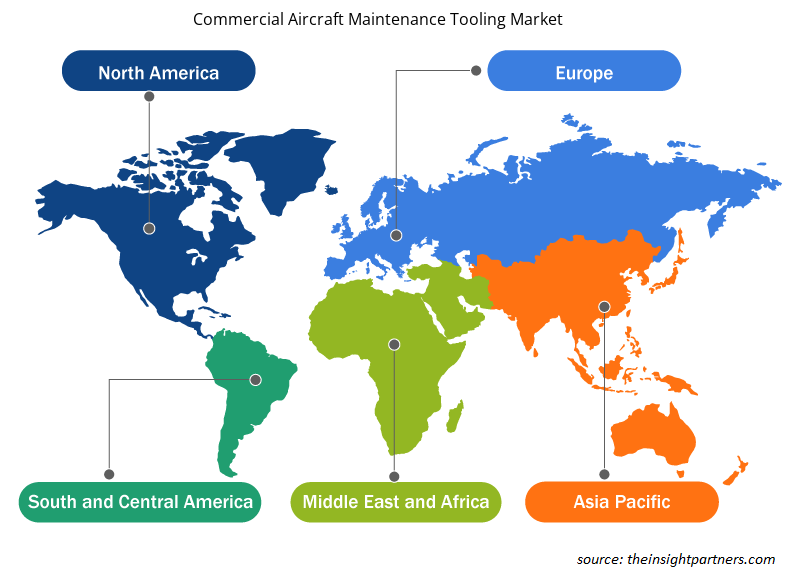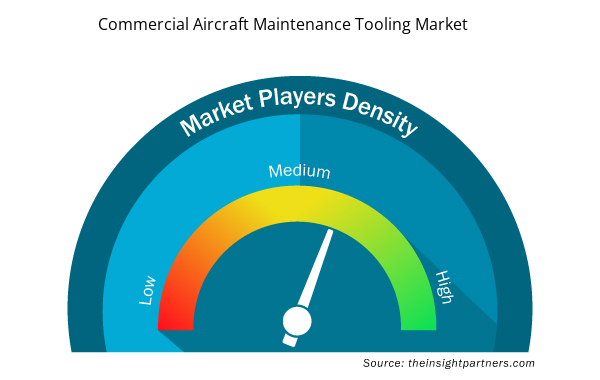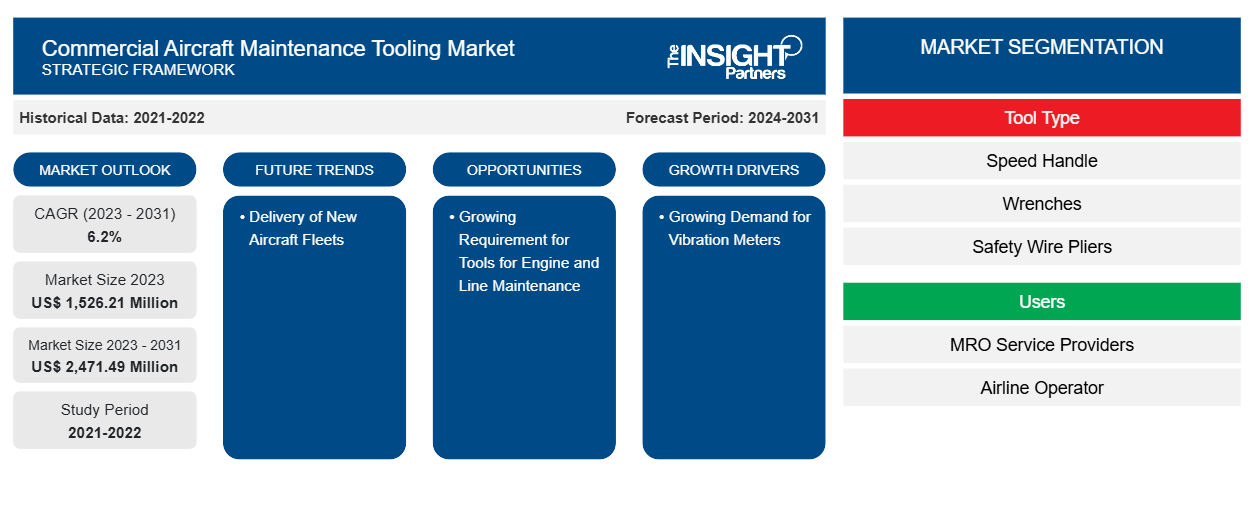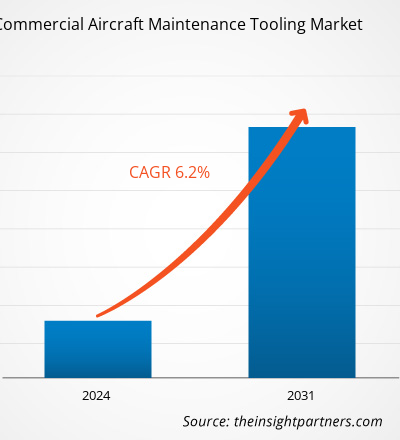民間航空機整備ツールの市場規模は、2023年の15億2,621万米ドルから2031年には24億7,149万米ドルに達すると予測されています。市場は2023年から2031年の間に6.2%のCAGRを記録すると予想されています。新しい航空機群の納入の増加は、引き続き市場の主要なトレンドとなると思われます。
民間航空機整備ツール市場分析
Red Box Tools、Hydro Systems KG、Shanghai kaviation Technology Co. Ltd.、Stanley Black & Decker、Stahlwille Eduard Wille GmbH & Co. KG、Field International Group Limited、Henchman Products、Dedienne Aerospace、FRANKE-Aerotech GmbH、German Gulf Aviation Services、Tronair、Snap-On Tools などの企業は、民間航空機整備ツール市場における大手メーカーです。これらの企業は、幅広い航空機整備ツールの設計、製造、販売を行っており、販売業者はそれを航空会社、MRO 企業、航空 OEM、航空機部品メーカーなどのエンド ユーザーに提供しています。
民間航空機整備ツール市場の概要
民間航空機整備ツール市場のエコシステムは多様で進化しています。その利害関係者は、原材料プロバイダー、MRO ツール コンポーネントおよびツールボックス メーカー、ディストリビューター、およびエンド ユーザーです。主要プレーヤーは、市場エコシステムのさまざまなノードに位置を占めています。原材料プロバイダーは、スチール、ゴム、アルミニウムなどの原材料をツール メーカーに供給し、ツール メーカーはそれを使用して最終的なツール製品を製造および設計します。最終製品は、会社のディストリビューターによる直接販売や、サードパーティのディストリビューターによるサードパーティ販売など、さまざまな媒体を通じてエンド ユーザーに配布されます。
要件に合わせてレポートをカスタマイズする
このレポートの一部、国レベルの分析、Excelデータパックなど、あらゆるレポートを無料でカスタマイズできます。また、スタートアップや大学向けのお得なオファーや割引もご利用いただけます。
- このレポートの主要な市場動向を入手してください。この無料サンプルには、市場動向から見積もりや予測に至るまでのデータ分析が含まれます。
民間航空機整備ツール市場の推進要因と機会
振動計の需要増加が市場を後押し
需要が継続的に増加しているため、高度な振動計のメーカーは、堅牢な振動分析装置の開発に注力しています。MTI Instrumentsは、ジェットエンジンに適したPBS-4100R +というタービン振動分析装置/バランシングシステムを開発しました。このシステムは、民間航空部門で運営されているいくつかの航空機メーカーとMRO施設で使用されています。いくつかの商用航空機振動分析装置/計が利用できることで、MROプロバイダーは必要な製品を簡単に調達できます。この要因は、商用航空機メンテナンスツール市場が長年にわたって推進するのに役立っています。MROサービスプロバイダーと社内MRO施設を持つ航空会社による高度な振動計の採用への傾向の高まりは、2031年まで商用航空機メンテナンスツール市場を牽引しています。
エンジンとラインのメンテナンス用ツールの需要増加
ラインメンテナンス活動は、民間航空機フリートの日常的な円滑な運用において重要な役割を果たします。航空機オペレーターの間では、ラインメンテナンスの重要性がかつてないほど高まっています。ラインメンテナンス担当者は、トルクレンチ、航空電子機器ツール、ホイールおよびブレーキメンテナンスツールなどのツールを使用します。世界中の航空機フリート数が増加するにつれて、ラインメンテナンスチームの間でこのようなツールの需要が高まると予想されます。民間航空機のラインメンテナンスサービスプロバイダーは、エンジンメンテナンスサービス会社とともに、タスクを適切に実行するために、ハイエンドのメンテナンス機器とツールの注文に重点を置いています。ラインメンテナンスとエンジンメンテナンスはどちらも、あらゆる航空機オペレーターにとって最も重要であり、予測期間中に民間航空機メンテナンスツール市場の進化を導くと予想されます。
民間航空機整備ツール市場レポートのセグメンテーション分析
民間航空機整備ツール市場分析の導出に貢献した主要なセグメントは、ツールの種類、ユーザー、およびアプリケーションです。
- ツールの種類に基づいて、民間航空機メンテナンスツール市場は、スピードハンドル、レンチ、安全ワイヤープライヤー、振動計、金属加工ツール、NDTツールなどに分かれています。スピードハンドルセグメントは、2023年に大きな市場シェアを占めました。
- ユーザーに基づいて、商用航空機メンテナンスツール市場は、MROサービスプロバイダーと航空会社に分かれています。MROサービスプロバイダーセグメントは、2023年に大きな市場シェアを占めました。
- 用途に基づいて、民間航空機メンテナンスツール市場は、エンジン、機体、着陸装置、ラインメンテナンス、その他に分類されます。機体セグメントは2023年に大きな市場シェアを占めました。
民間航空機整備ツール市場シェアの地域別分析
商用航空機整備ツール市場レポートの地理的範囲は、主に北米、アジア太平洋、ヨーロッパ、中東およびアフリカ、南米および中米の 5 つの地域に分かれています。
商用航空機整備工具市場レポートの対象範囲は、北米(米国、カナダ、メキシコ)、欧州(ロシア、英国、フランス、ドイツ、イタリア、その他の欧州)、アジア太平洋(韓国、インド、オーストラリア、日本、中国、その他のアジア太平洋)、中東およびアフリカ(サウジアラビア、南アフリカ、UAE、その他の中東およびアフリカ)、南米および中米(アルゼンチン、ブラジル、その他の南米および中米)です。収益面では、2023年の商用航空機整備工具市場シェアは北米が圧倒的でした。欧州は世界の商用航空機整備工具市場への第2位の貢献者であり、アジア太平洋がそれに続きます。
民間航空機整備ツール市場の地域別分析
予測期間を通じて民間航空機整備ツール市場に影響を与える地域的な傾向と要因は、Insight Partners のアナリストによって徹底的に説明されています。このセクションでは、北米、ヨーロッパ、アジア太平洋、中東、アフリカ、南米、中米にわたる民間航空機整備ツール市場のセグメントと地理についても説明します。

- 民間航空機整備工具市場の地域別データを入手
民間航空機整備ツール市場レポートの範囲
| レポート属性 | 詳細 |
|---|---|
| 2023年の市場規模 | 15億2,621万米ドル |
| 2031年までの市場規模 | 24億7,149万米ドル |
| 世界のCAGR(2023年~2031年) | 6.2% |
| 履歴データ | 2021-2022 |
| 予測期間 | 2024-2031 |
| 対象セグメント | ツールタイプ別
|
| 対象地域と国 | 北米
|
| 市場リーダーと主要企業プロフィール |
|
民間航空機整備ツール市場のプレーヤー密度:ビジネスダイナミクスへの影響を理解する
民間航空機整備ツール市場は、消費者の嗜好の変化、技術の進歩、製品の利点に対する認識の高まりなどの要因により、エンドユーザーの需要が高まり、急速に成長しています。需要が高まるにつれて、企業は提供を拡大し、消費者のニーズを満たすために革新し、新たなトレンドを活用し、市場の成長をさらに促進しています。
市場プレーヤー密度とは、特定の市場または業界内で活動している企業または会社の分布を指します。これは、特定の市場スペースに、その市場規模または総市場価値に対してどれだけの競合相手 (市場プレーヤー) が存在するかを示します。
民間航空機整備ツール市場で事業を展開している主要企業は次のとおりです。
- RHエアロシステムズ
- レッドボックスツール
- スタンレー・ブラック・アンド・デッカー
- 上海キャビエーションテクノロジー株式会社
- Stahlwille Eduard Wille GmbH & Co. KG
- フィールドインターナショナルグループリミテッド
免責事項:上記の企業は、特定の順序でランク付けされていません。

- 民間航空機整備ツール市場のトップキープレーヤーの概要を入手
民間航空機整備ツール市場のニュースと最近の動向
民間航空機整備ツール市場は、主要な企業出版物、協会データ、データベースなどの一次調査と二次調査後の定性的および定量的データを収集することによって評価されます。民間航空機整備ツール市場におけるいくつかの動向を以下に示します。
- Rhinestahl Corporation は Hydro Systems KG を買収し、航空支援機器およびサービス市場における明確な業界リーダーとなりました。(出典: Rhinestahl Corporation、プレスリリース、2024 年 4 月)
- フィールド・インターナショナル・グループは、インド事業であるフィールド・インターナショナル・プライベート・リミテッドの拡大を発表し、航空機のツールと製造ソリューションを提供することでインド国内および国際市場にサービスを提供する製造施設に発展する予定です。(出典:フィールド・インターナショナル・グループ・リミテッド、プレスリリース、2021年5月)
民間航空機整備ツール市場レポートの対象範囲と成果物
「民間航空機整備ツール市場の規模と予測(2021〜2031年)」レポートでは、以下の分野をカバーする市場の詳細な分析を提供しています。
- 商業航空機整備ツール市場の規模と予測、および対象範囲に含まれるすべての主要市場セグメントの世界、地域、国レベルでの予測
- 民間航空機整備ツール市場の動向、および推進要因、制約、主要な機会などの市場動向
- 詳細なPESTおよびSWOT分析
- 主要な市場動向、世界および地域の枠組み、主要プレーヤー、規制、最近の市場動向を網羅した商用航空機メンテナンスツール市場分析
- 市場集中、ヒートマップ分析、主要プレーヤー、商用航空機整備ツール市場の最近の動向を網羅した業界展望と競争分析
- 詳細な企業プロフィール
- 過去2年間の分析、基準年、CAGRによる予測(7年間)
- PEST分析とSWOT分析
- 市場規模価値/数量 - 世界、地域、国
- 業界と競争環境
- Excel データセット



Report Coverage
Revenue forecast, Company Analysis, Industry landscape, Growth factors, and Trends

Segment Covered
This text is related
to segments covered.

Regional Scope
North America, Europe, Asia Pacific, Middle East & Africa, South & Central America

Country Scope
This text is related
to country scope.
よくある質問
North America dominated the commercial aircraft maintenance tooling market in 2023.
The increasing delivery of new aircraft fleets is the future trend of the commercial aircraft maintenance tooling market.
Red Box Tools, RH Aero Systems, Stanley Black & Decker, Shanghai kaviation Technology Co. Ltd., Stahlwille Eduard Wille GmbH & Co. KG, Field International Group Limited, Henchman Products, Dedienne Aerospace, FRANKE-Aerotech GmbH, German Gulf Aviation Services, Tronair, Snap-On Tools are some of the leading players in the market.
US$ 2,471.49 million estimated value of the commercial aircraft maintenance tooling market by 2031.
6.2% is the expected CAGR of the commercial aircraft maintenance tooling market.
Trends and growth analysis reports related to Aerospace and Defense : READ MORE..
The Insight Partners performs research in 4 major stages: Data Collection & Secondary Research, Primary Research, Data Analysis and Data Triangulation & Final Review.
- Data Collection and Secondary Research:
As a market research and consulting firm operating from a decade, we have published and advised several client across the globe. First step for any study will start with an assessment of currently available data and insights from existing reports. Further, historical and current market information is collected from Investor Presentations, Annual Reports, SEC Filings, etc., and other information related to company’s performance and market positioning are gathered from Paid Databases (Factiva, Hoovers, and Reuters) and various other publications available in public domain.
Several associations trade associates, technical forums, institutes, societies and organization are accessed to gain technical as well as market related insights through their publications such as research papers, blogs and press releases related to the studies are referred to get cues about the market. Further, white papers, journals, magazines, and other news articles published in last 3 years are scrutinized and analyzed to understand the current market trends.
- Primary Research:
The primarily interview analysis comprise of data obtained from industry participants interview and answers to survey questions gathered by in-house primary team.
For primary research, interviews are conducted with industry experts/CEOs/Marketing Managers/VPs/Subject Matter Experts from both demand and supply side to get a 360-degree view of the market. The primary team conducts several interviews based on the complexity of the markets to understand the various market trends and dynamics which makes research more credible and precise.
A typical research interview fulfils the following functions:
- Provides first-hand information on the market size, market trends, growth trends, competitive landscape, and outlook
- Validates and strengthens in-house secondary research findings
- Develops the analysis team’s expertise and market understanding
Primary research involves email interactions and telephone interviews for each market, category, segment, and sub-segment across geographies. The participants who typically take part in such a process include, but are not limited to:
- Industry participants: VPs, business development managers, market intelligence managers and national sales managers
- Outside experts: Valuation experts, research analysts and key opinion leaders specializing in the electronics and semiconductor industry.
Below is the breakup of our primary respondents by company, designation, and region:

Once we receive the confirmation from primary research sources or primary respondents, we finalize the base year market estimation and forecast the data as per the macroeconomic and microeconomic factors assessed during data collection.
- Data Analysis:
Once data is validated through both secondary as well as primary respondents, we finalize the market estimations by hypothesis formulation and factor analysis at regional and country level.
- Macro-Economic Factor Analysis:
We analyse macroeconomic indicators such the gross domestic product (GDP), increase in the demand for goods and services across industries, technological advancement, regional economic growth, governmental policies, the influence of COVID-19, PEST analysis, and other aspects. This analysis aids in setting benchmarks for various nations/regions and approximating market splits. Additionally, the general trend of the aforementioned components aid in determining the market's development possibilities.
- Country Level Data:
Various factors that are especially aligned to the country are taken into account to determine the market size for a certain area and country, including the presence of vendors, such as headquarters and offices, the country's GDP, demand patterns, and industry growth. To comprehend the market dynamics for the nation, a number of growth variables, inhibitors, application areas, and current market trends are researched. The aforementioned elements aid in determining the country's overall market's growth potential.
- Company Profile:
The “Table of Contents” is formulated by listing and analyzing more than 25 - 30 companies operating in the market ecosystem across geographies. However, we profile only 10 companies as a standard practice in our syndicate reports. These 10 companies comprise leading, emerging, and regional players. Nonetheless, our analysis is not restricted to the 10 listed companies, we also analyze other companies present in the market to develop a holistic view and understand the prevailing trends. The “Company Profiles” section in the report covers key facts, business description, products & services, financial information, SWOT analysis, and key developments. The financial information presented is extracted from the annual reports and official documents of the publicly listed companies. Upon collecting the information for the sections of respective companies, we verify them via various primary sources and then compile the data in respective company profiles. The company level information helps us in deriving the base number as well as in forecasting the market size.
- Developing Base Number:
Aggregation of sales statistics (2020-2022) and macro-economic factor, and other secondary and primary research insights are utilized to arrive at base number and related market shares for 2022. The data gaps are identified in this step and relevant market data is analyzed, collected from paid primary interviews or databases. On finalizing the base year market size, forecasts are developed on the basis of macro-economic, industry and market growth factors and company level analysis.
- Data Triangulation and Final Review:
The market findings and base year market size calculations are validated from supply as well as demand side. Demand side validations are based on macro-economic factor analysis and benchmarks for respective regions and countries. In case of supply side validations, revenues of major companies are estimated (in case not available) based on industry benchmark, approximate number of employees, product portfolio, and primary interviews revenues are gathered. Further revenue from target product/service segment is assessed to avoid overshooting of market statistics. In case of heavy deviations between supply and demand side values, all thes steps are repeated to achieve synchronization.
We follow an iterative model, wherein we share our research findings with Subject Matter Experts (SME’s) and Key Opinion Leaders (KOLs) until consensus view of the market is not formulated – this model negates any drastic deviation in the opinions of experts. Only validated and universally acceptable research findings are quoted in our reports.
We have important check points that we use to validate our research findings – which we call – data triangulation, where we validate the information, we generate from secondary sources with primary interviews and then we re-validate with our internal data bases and Subject matter experts. This comprehensive model enables us to deliver high quality, reliable data in shortest possible time.


 このレポートの無料サンプルを入手する
このレポートの無料サンプルを入手する